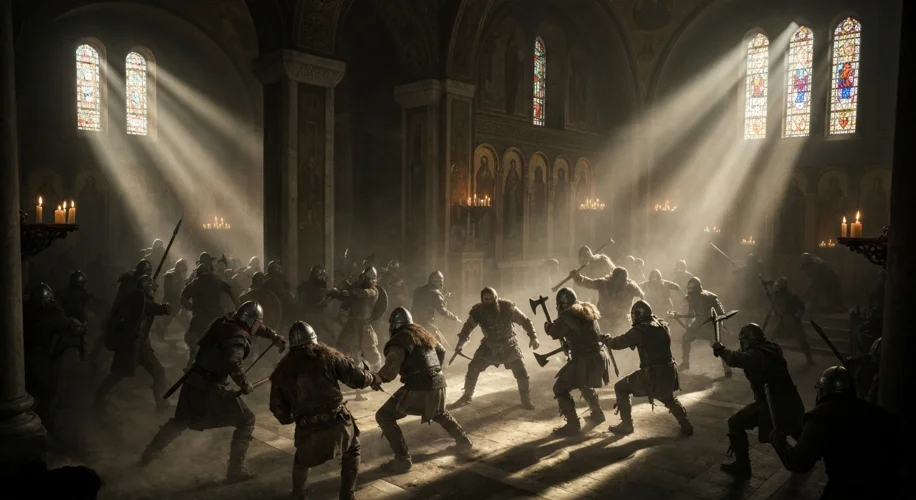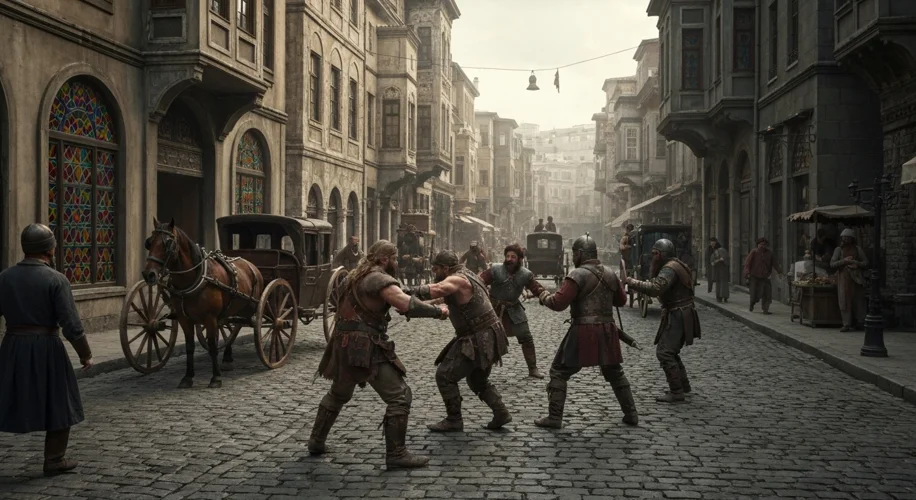In the heart of the Byzantine Empire, amidst the grandeur and the perpetual hum of a city that was a crossroads of the world, a seemingly minor scuffle erupted. This wasn’t just any tavern brawl; it was a fleeting moment that, through the dusty lens of history, offered a surprising glimpse into the far-reaching presence of Norsemen – the Vikings – and their interactions within this ancient, opulent metropolis.
Constantinople, the jewel of the East, was a city of a million stories. For centuries, it had been the beating heart of the Roman Empire in its eastern iteration, a bastion of Christianity, and a dazzling center of trade and culture. Its immense walls, its towering Hagia Sophia, and its bustling marketplaces were legendary, attracting merchants, pilgrims, and adventurers from every corner of the known world.
Among these diverse denizens were the Varangians, a formidable force that included many Norse warriors. Recruted as elite mercenaries by the Byzantine emperors, the Varangian Guard was renowned for its loyalty, its ferocity in battle, and its distinctive Norse heritage. They served as the personal bodyguards of the emperor, a testament to the trust placed in these formidable warriors from the cold north.
While the Varangian Guard’s presence is well-documented, the everyday lives and the less official interactions of these Norsemen in Constantinople are harder to piece together. That’s where a curious incident, recorded in the annals of the empire, comes into play. While specific details are scarce, accounts point to a brawl involving Norsemen in the bustling Hagia Sophia. Imagine the scene: the majestic cathedral, usually a place of solemn worship and awe-inspiring beauty, suddenly filled with the sounds of shouting, the clash of steel, and the grunts of struggling men.

The specific causes of this particular altercation remain shrouded in the mists of time. Was it a dispute over coin, a drunken insult, a disagreement over their treatment, or a clash stemming from cultural misunderstandings? The sources are frustratingly vague. However, the very fact that such an event is noted suggests a significant Norse presence that could spill over into public spaces and create disturbances. It hints at the integration, however rough, of these foreign warriors into the fabric of city life.
This incident, while small, speaks volumes. It underscores that the Vikings, or at least those of Norse descent serving in Constantinople, were not merely soldiers confined to barracks. They were individuals who navigated the complex social landscape of the Byzantine capital, engaging in the same everyday activities – and unfortunately, sometimes the same conflicts – as other inhabitants.
Furthermore, such a public disturbance in a sacred and central location like the Hagia Sophia would have had consequences. It likely led to increased scrutiny of the Varangian Guard, perhaps stricter regulations, or disciplinary actions. For the Norsemen involved, it could have meant severe punishment, reflecting the Byzantine Empire’s intolerance for disorder, especially within its most revered spaces.
While this specific brawl might seem like a footnote, it serves as a powerful reminder that history is not just made by grand pronouncements and famous battles. It is also woven from the everyday interactions, the friction, and the occasional outbursts of ordinary people – even if those ordinary people are fearsome Viking warriors navigating the labyrinthine streets of 18th-century Constantinople. It paints a more vivid, human picture of a period and a people whose influence stretched far beyond the icy fjords of their homeland.

